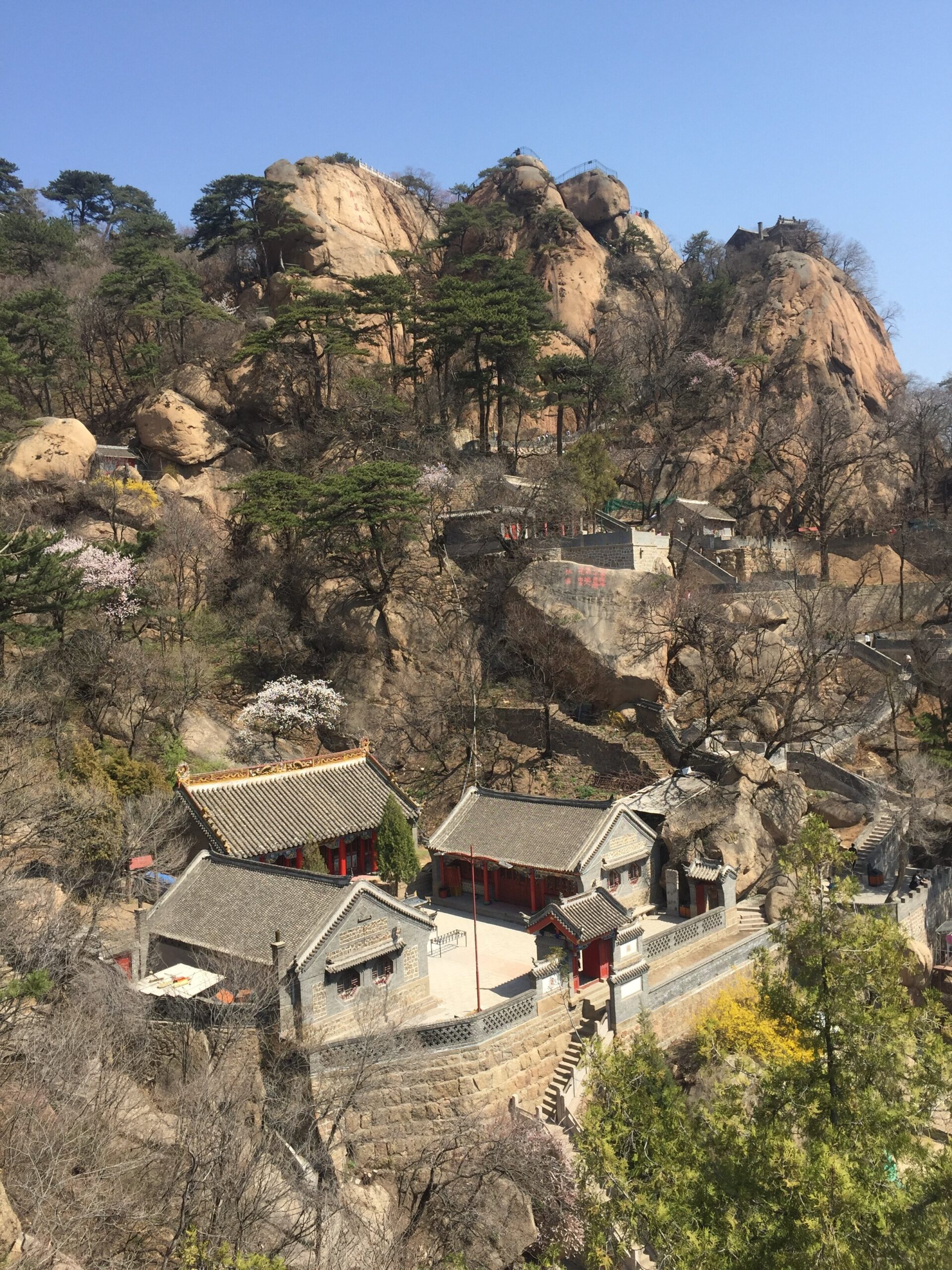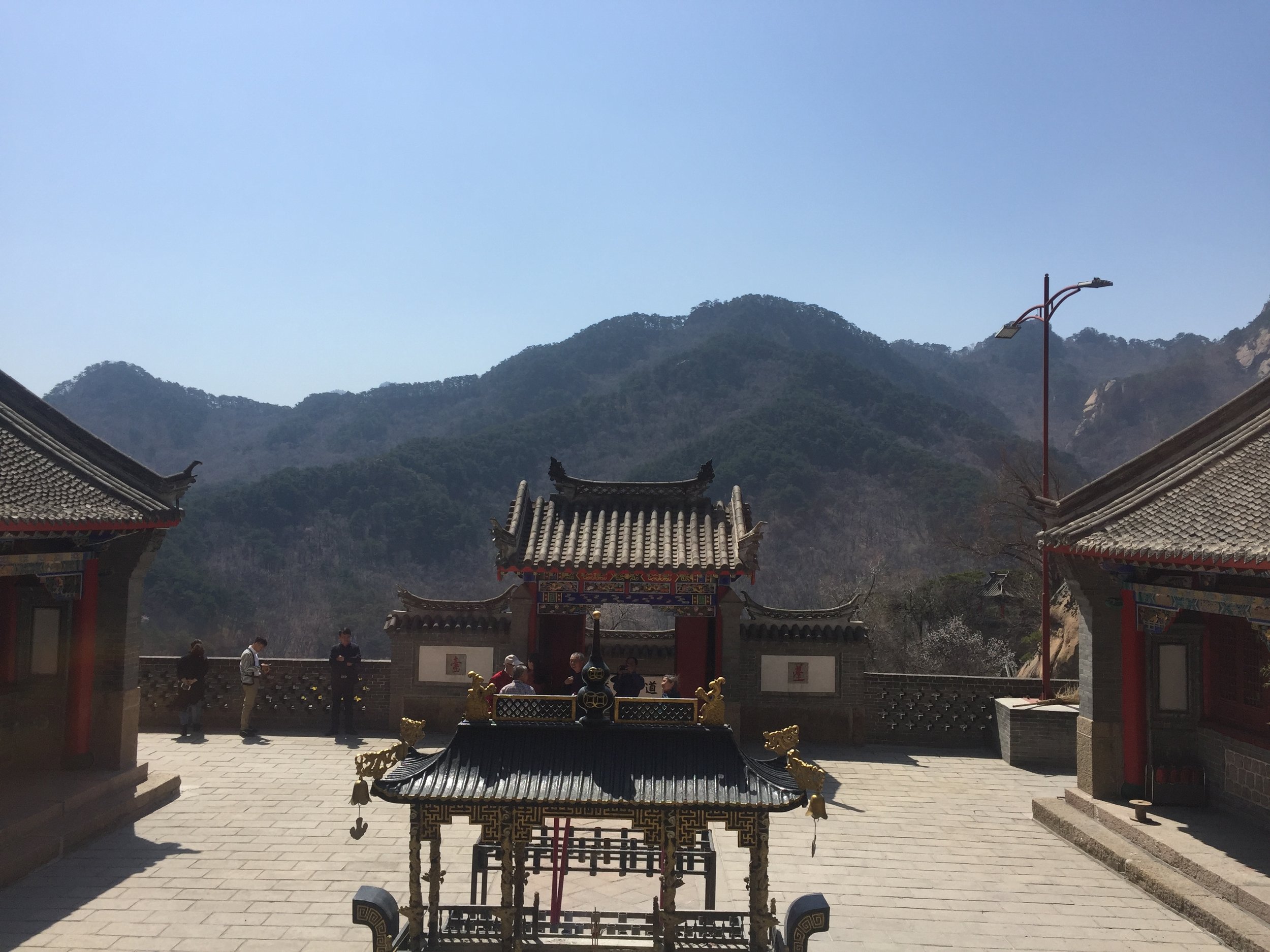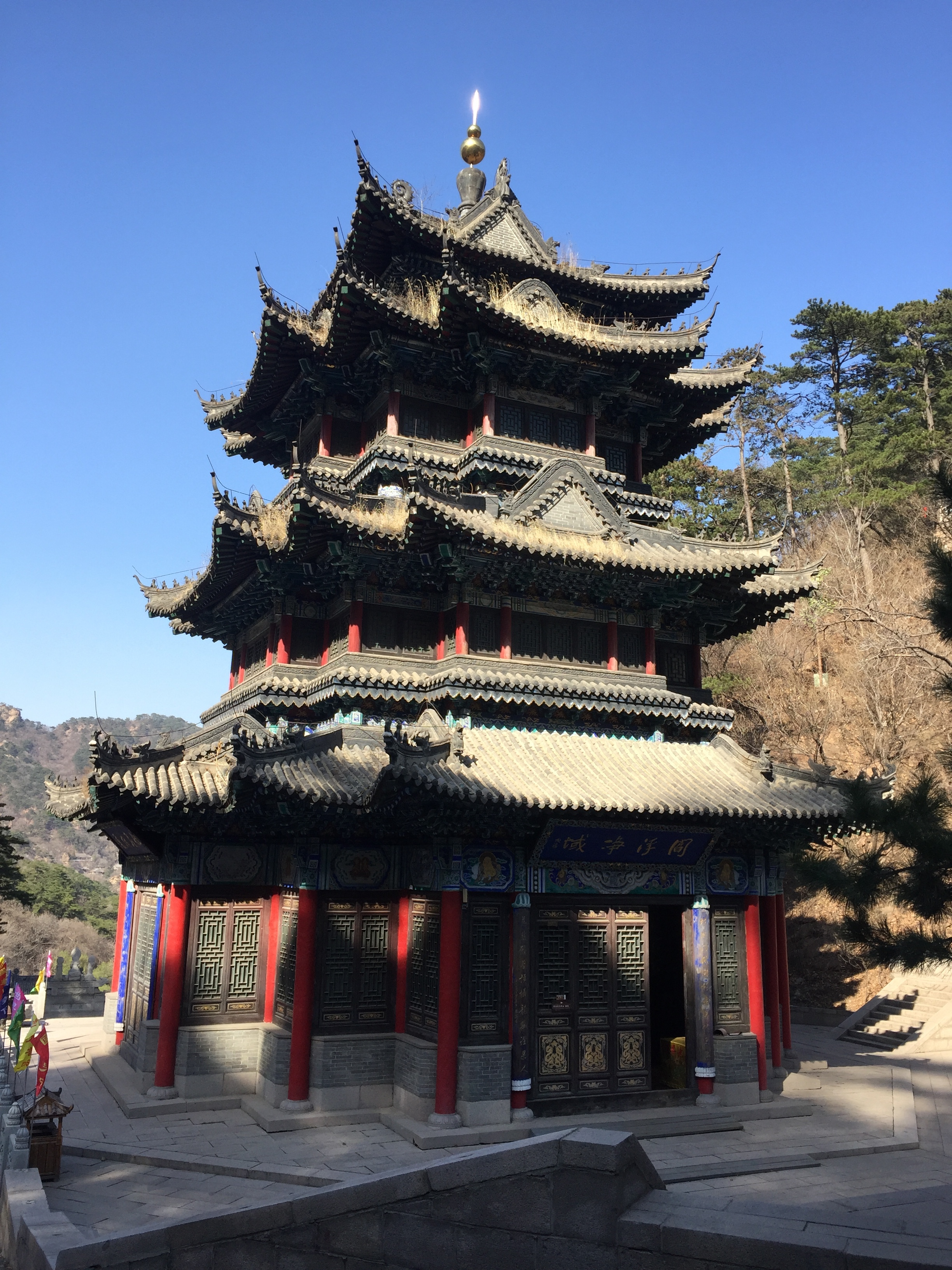In the heart of China’s Rustbelt region of Liaoning, Qian Shan Mountains National Park in the northeast of the country is an absolute must see if you’re working or tripping through the area, particularly if you are from the west and value the sight of trees unconstrained by median strips and sidewalk concrete.
The beetling precipices, soaring pinnacles, lovely weather, and ease of access are all major positives for this mountain attraction which carries an AAAA rating from the Chinese Tourism Bureau. Any medium-term visitors in cities like Shenyang, Anshan, Dalian, or Harbin should definitely consider Qian Shan National Park as a day trip.
PICTURED: View from the first temple on the Taoist side of the Peach Blossom Valley.
On the surface…
Qian Shan Mountains Park, or the Thousand Lotus Petal Mountains, are just a 35 minute drive from the city of Anshan, which is reachable by high speed rail from any of the major Liaoning cities. It’s a sacred mountain range for both Buddhists and Taoists, a very rare cultural and theocratic blending.
Some of the temples are 200 years old or more, and the hiking opportunities are greatly varied, and can be as difficult and numerous as you’d like them. There are shallow slopes shaded by pines, and also comically-steep staircases that lead you up to the highest peaks and temples.
The park is well serviced, and there are trolleys that go to many of the sights, as well as restaurants and vendors of water and other beverages.
Getting in…
If you’re a westerner and have WeChat installed on your phone, you can make all the same bookings that I made and practically plan the whole trip this way. It starts by grabbing a Chinese citizen who speaks English and asking them to do the booking for you. This is obviously recommended since Chinese characters don’t always offer direct translations into English.
First buy a train ticket over your phone and do yourself a favor and get a high speed train. From the station in Shenyang where I departed, I reached the city of Anshan in just 36 minutes. Try and arrive fairly early. Once in Anshan, take a taxi to your hotel, which you can also book over WeChat. Once you check in, lace up your boots and just take another taxi to the park. All these cab rides will add up to not very much at all.
The entrance fee when I went in April of 2018 was RMB 80 per person. Once inside, you can get anywhere you want via your feet and there wasn’t really any part of the place that was off limits. You can walk into any of the temples, and I’m quite certain you could walk off into the woods if you were so inclined…
PICTURED: The Water Dragon Temple viewed from across the Peach Blossom Valley framed poorly by a poorly taken photo by yours truly.
A vertical landscape
The Karst-rock mountainscapes of China and all of their wonderful verticalness can be attributed to their relative youth in geological terms. Because weathering agents like wind and rain have only had a few million years to beat against the amber-colored rock, they are still quite steep and jagged.
If walking up the main road into the park, the first major Taoist temple will be on your right-hand side. Ascending up to the highest sheltered pagodas is like traversing a vertical labyrinth, and if you’re lucky you’ll spot the Taoist monks going about their business.
When I climbed up into the sanctuary, I got lost and actually had to find a totally different way down, it was a delightful experience.
For those trying to find a vision of pre-communist China, an older and perhaps more mystical China, the northeast of the country offers slim pickings. Qian Mountains gives you a chance to glimpse that older world, and it was a great relief to get a couple thousand mouthfuls of fresh mountain air.
PICTURED: The exquisite exterior of the 1000 Buddha Temple. You’ll have to see for yourself what lies within.
Must sees…
The 1000 Buddha Temple houses China’s largest collection of Buddhist carving techniques from the three final Chinese dynasties, Tang, Ming and Qing.
The Water Dragon Temple is something straight out of a kung fu movie, and sits across the Peach Blossom Valley from the stairs up to the Maitreya Buddhist Scenic Spot. Bathed in incense and sporting long streamers of prayer flags, the Water Dragon Temple is a truly wonderful place to have lunch, or light some fragrance and spare some minutes for calm reflection.
Maitreya Buddhist Scenic Spot is the largest naturally-occurring image of the Buddha in the world, and that’s because Buddha takes up a whole mountain. If you’re not the fittest individual and can’t make the very steep climb up the Peach Blossom Valley, there is a cable car that will take you up to the viewing platform.
If you are half-way in shape, the climb is a must, as you’ll feel you are set right in the heart of a Song Dynasty landscape painting.
In conclusion all of this cost my friend and I just 371 RMB per person, a figure which also included all of our meals, random souvenirs, and hotel costs. Divide that roughly 6 and you have the figure in dollars.
Note: All photos are taken by Andrew Corbley, who retains exclusive rights to all. The unauthorized reprinting of this article or any of the images is strictly prohibited.






